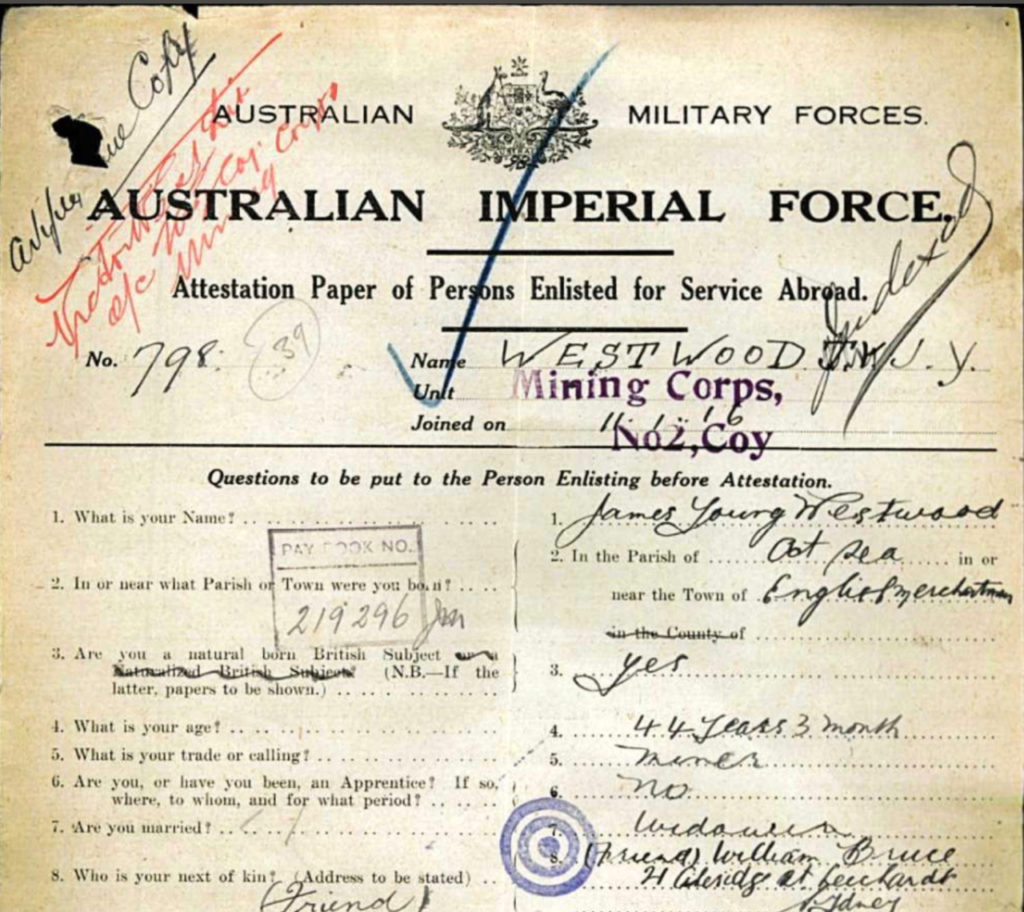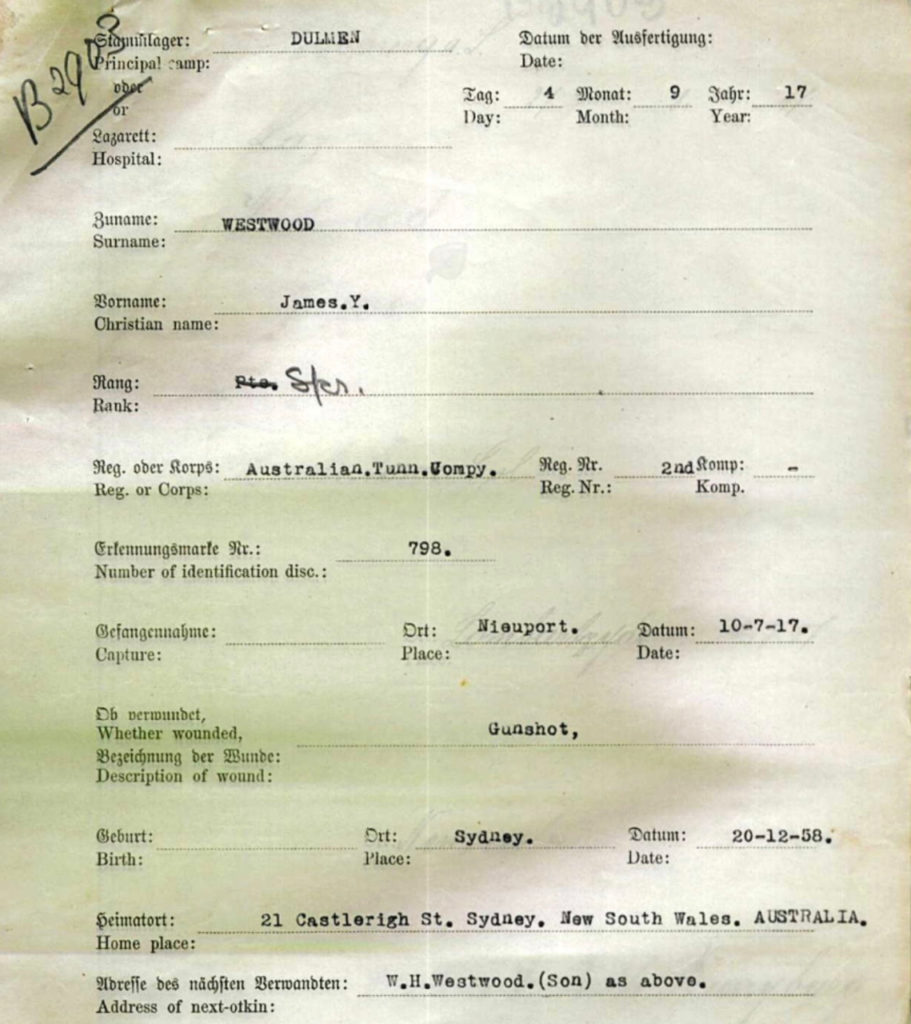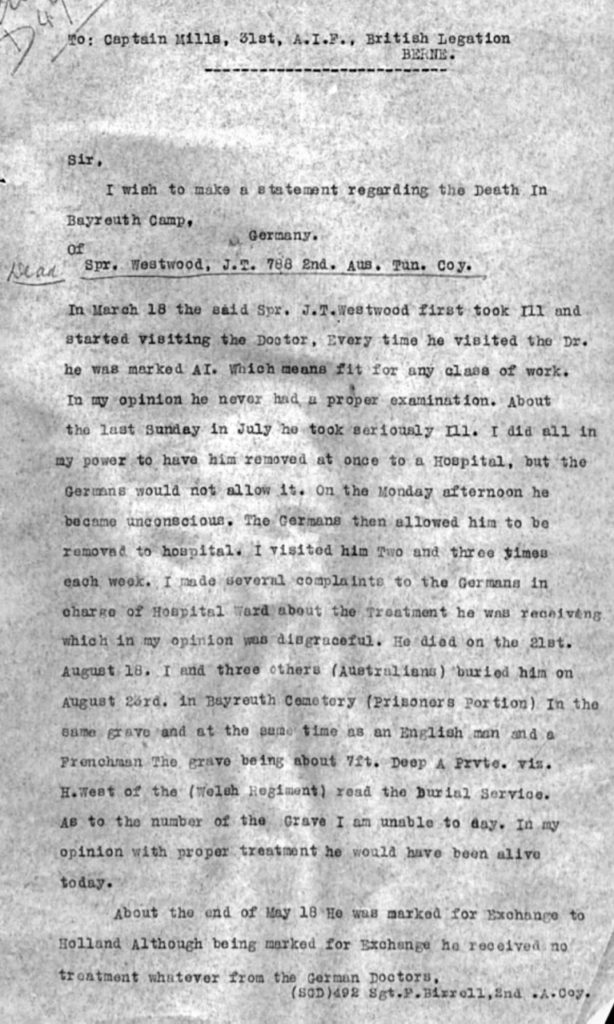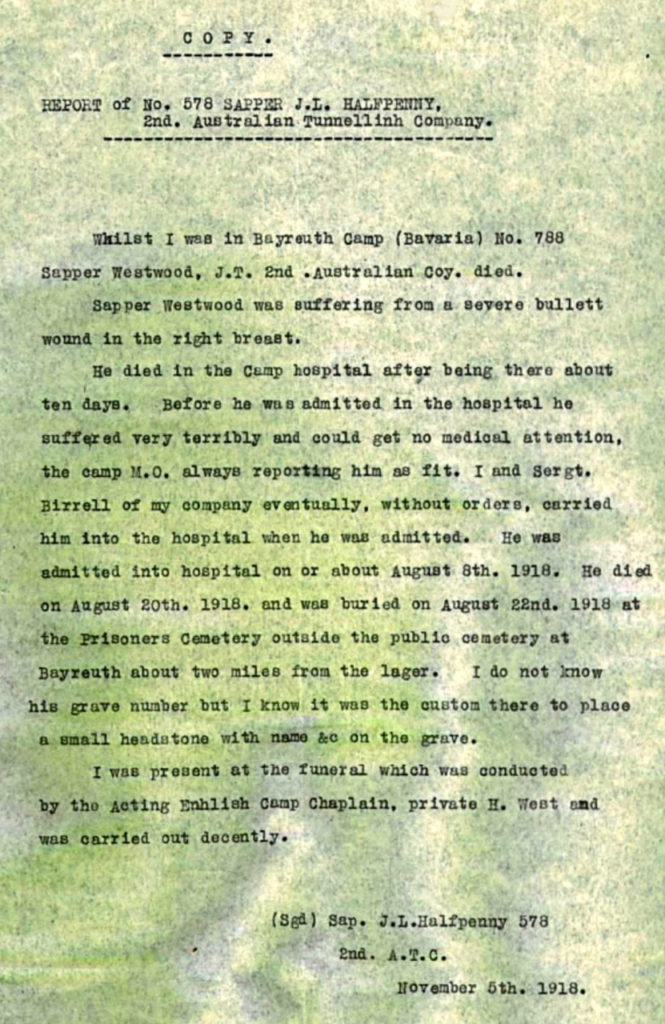A revealing comparison of WW1 POWs of Germany and WW2 POWs of Japan.
WESTWOOD, James Young Service No. 798, No. 2 Company Mining Corps – Sapper with No. 2 Australian Tunnelling Company taken POW of Germany. Westwood died 4 September 1917, Bayreuth, Germany. He is grandfather to 2/4th’s 19 year old reinforcement WX17675 Ernie Thomsett KIA Singapore. Ernie enlisted exactly 3 months earlier. As with many reinforcements Ernie went to war with little training.
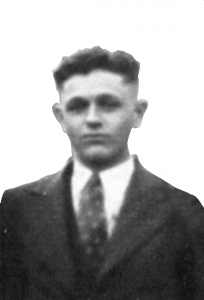
Sapper Westwood was captured 10 July, 1916 France during the disastrous Battle of Fromelles. The Allies launched a major offensive on 1st July 1916 designed to prevent the Germans reinforcing their troops at the Somme. The Australian Tunnellers were chosen to participate in this campaign. Groups of AIF and Allied soldiers were taken POW – trapped without reinforcements and nowhere to go but surrender.
The attack on Fromelles 19 July 1916 was the first major battle fought by Australian troops on the Western Front. It was a total disaster and included 16th Battalion with many West Australians losing their lives.
It is of interest the WWI military history of Australia, UK, Canada and New Zealand almost entirely excludes reference to POWs, and Charles Bean certainly did not include this in his writing. There was a very real odour of disgrace attached to being taken a POW.
After the war many Australians would have ‘known of somebody’ who ‘knew a bloke who had been a POW of Germany’ or they ‘knew a former POW – who lived a few streets away’ or was ‘farming in the next town’ or ‘a mate of a distant cousin’ or ‘a mate had a sister whose husband’s brother had been a WWI POW!’
It was quietly spoken of. Families embraced their sons/brothers/husbands who were returned POWs but it was a topic never written about in the media.
Was it deliberately omitted from official history?
In reality, being a WW1 POW did not fit with the image of an ‘Anzac hero’ – stories and poetry of bravery which lingered well into the late 30s until the world faced another war, did not include the history of POWs of Germany.
Surrender was not encouraged by AIF and Allies however at that time with the technology available it was not difficult for individuals and groups to be overwhelmed and taken POW. After battles the huge numbers who were left wounded and unable to return to Allied lines or were not able to be saved by their own, were left for the Germans to collect. Quite often those with leg wounds were shot as it was too difficult to move them.
There were at least 4,000 Australians taken POWs equalling 1.2%, considerably higher than all other Commonwealth countries such as Canada, India, etc. UK was 3.15%, France 3.08%, Germany was 18.37% and Russia 26.12%.
The same odour of disgrace was very evident at the Fall of Singapore.
Remember many senior officers were WWI experienced veterans (history now says they were probably too old to participate in Singapore). Surrender to the enemy was unheard of and these same officers had difficulty adapting to life as a WW2 POW of Japan. We now know these same officers sometimes failed to look after and/or lead their own men after the Fall of Singapore, in particular once the men left Singapore on work parties and during the horrendous years of captivity which followed.
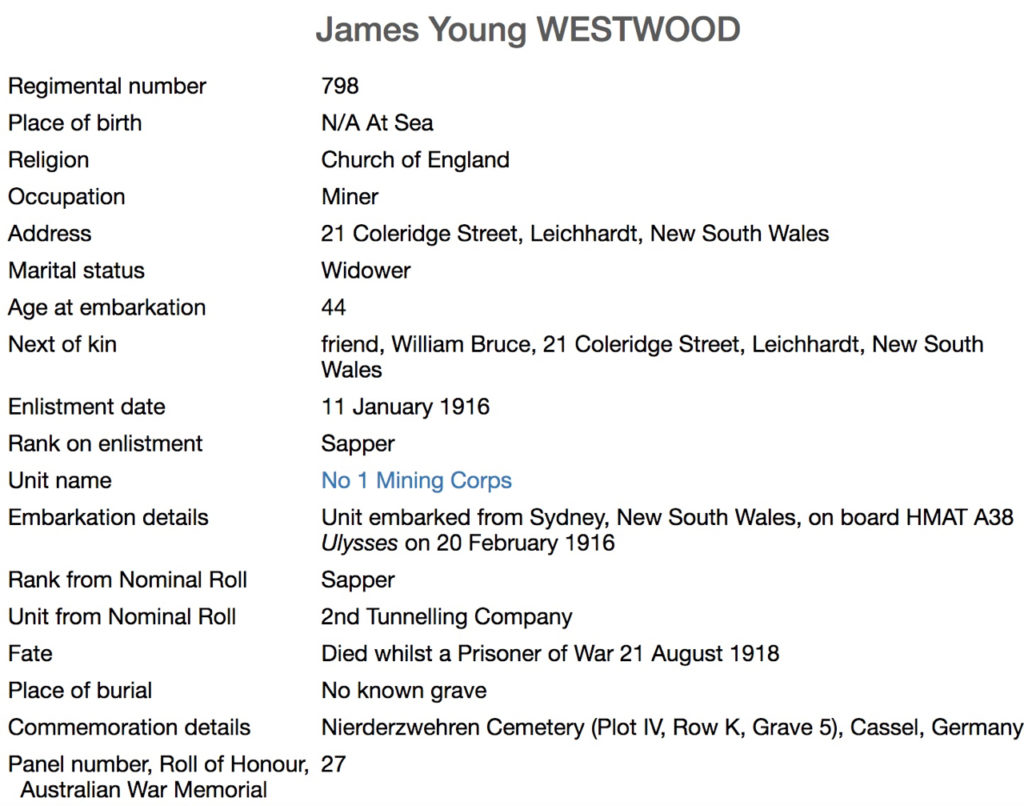
Westward recorded his NOK a friend called William Bruce. The AWM file includes correspondence between Bruce and officials re Westwood.
The following information was copied from AWM Personnel Records for James Young Westwood:
(Westwood claims (on enlistment) he was 44 years old – however he was 59 years old when he died – his birth was correctly recorded on German document as 20 December 1858, the Germans were always precise!)
There are several discrepancies between various documents (he is written as J.T. Westwood and not J.Y. however we believe it is James Young Westwood, father of Vera Thomsett (nee Westwood). Westwood must have moved to NSW around the time of his wife’s death at Collie in 1913 – or there may have been a family break-down prior to 1913.
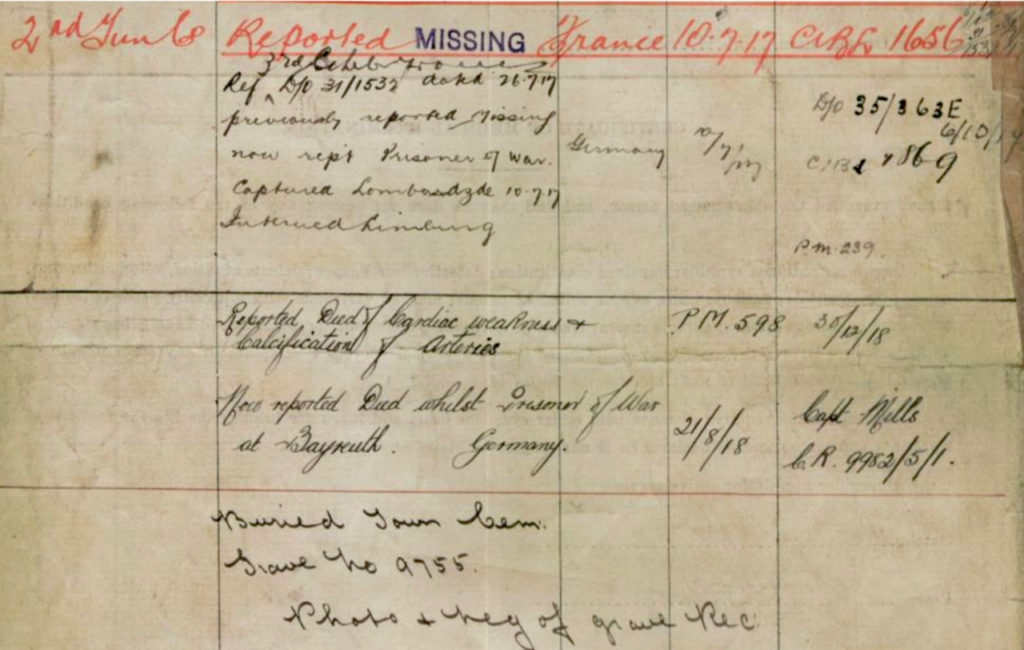
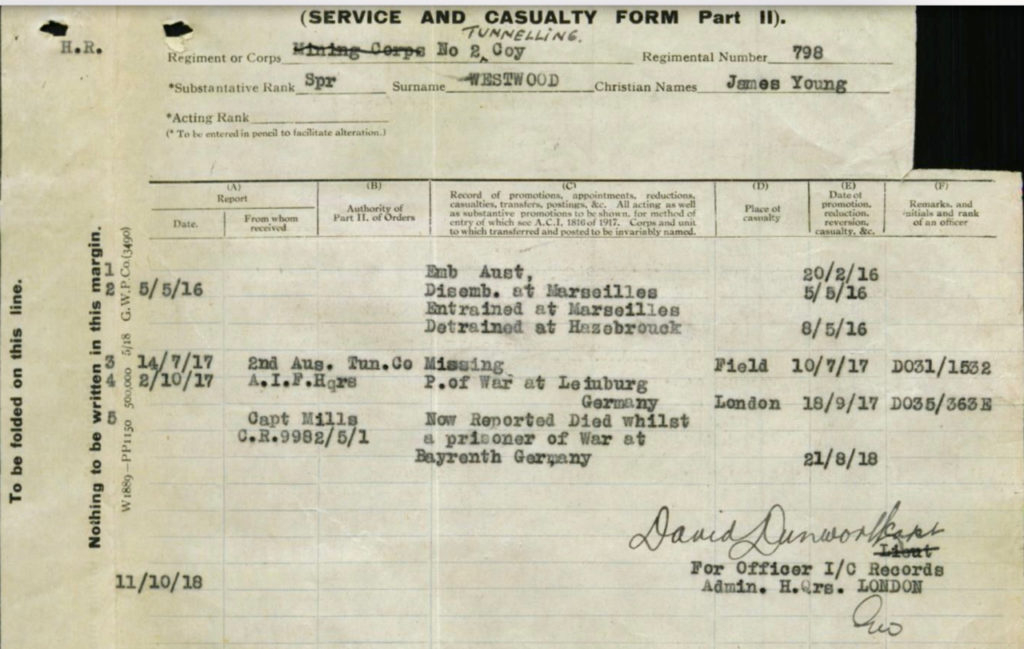
His AWM official file shows Westwood died of illness, but in fact this is not correct. This maybe due to the fact that details of his death did not come to light until the end of the war. POWs who were with him at Bayreuth provided eye witness accounts of his death. He died of GSW for which he received no medical attention. Starvation was a huge factor in his death, and was one of the greatest problems along with poor sanitary conditions for thousands and thousands of POWs of Germany. Germany’s access to food had stalled – much of the civilian population were starving, the soldiers had not much more and POWs well down on the list of priorities.
Red Cross Parcels did reach many POWs (unlike POWS of Japan) – these parcels were the main source of food for them and personal records show hungry German soldiers would sometimes offer to trade for food in the parcels.
During WW1 it is known both German and Allied injured or ill POWs did not receive medical treatment, or if they did it was often too late, sometimes taking care of their own wounded first and foremost and sometimes they chose not to provide medical care.
The were written reports after the war where AIF POWs were provided the same care as wounded German soldiers and for some like Westwood, sadly he was surely left to die.
